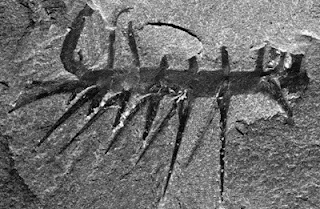Mitochondrial Eve: Our Common Ancestral Mother?
Mitochondrial Eve is said to be our matrilineal most recent common ancestor. It is estimated that she lived 200,000 years ago in East Africa. All human beings today have descended from this woman through their mother's side. Mitochondrial DNA is passed down from mother to child without recombining, which means every person's mtDNA descended directly from hers. Adam, our patrilineal most recent common ancestor and Eve lived thousands of years apart. This was a quite a discovery because it helps prove the hypothesis that humans originated in Africa and subsequently spread outwards.
Wednesday, May 2, 2012
Thursday, April 26, 2012
Animal Testing
Animal Testing: Is it really worth the Risk?
Every year more than 100 million animals are killed for cosmetic, food, and drug testing.

Animal testing is a controversial issue that has been debated for a long time. Many people question if the advances made in the fields of food, drugs, and cosmetics are worth the price of harming animals. 43% of adults oppose the use of animals for experiments. The other 57% accept it because they believe it is crucial to medical progress. Many advocacy groups against animal testing support their argument saying that most of the experiments lead to dead ends anyways. 92% percent of drugs—those that have been tested on animals and in vitro—do not make it through Phase 1 of human clinical trials. As a society, we would never consent to using human test subjects, yet we have no objections to using animals such as mice, rats, cats, dogs, and monkeys. What separates these 2 groups? Just because animals can't tell us they are in pain, do they still not experience the same harmful effects? We need to stand up for and protect the rights of all living creatures by boycotting companies that use animals to further their economic gains.
Every year more than 100 million animals are killed for cosmetic, food, and drug testing.
Animal testing is a controversial issue that has been debated for a long time. Many people question if the advances made in the fields of food, drugs, and cosmetics are worth the price of harming animals. 43% of adults oppose the use of animals for experiments. The other 57% accept it because they believe it is crucial to medical progress. Many advocacy groups against animal testing support their argument saying that most of the experiments lead to dead ends anyways. 92% percent of drugs—those that have been tested on animals and in vitro—do not make it through Phase 1 of human clinical trials. As a society, we would never consent to using human test subjects, yet we have no objections to using animals such as mice, rats, cats, dogs, and monkeys. What separates these 2 groups? Just because animals can't tell us they are in pain, do they still not experience the same harmful effects? We need to stand up for and protect the rights of all living creatures by boycotting companies that use animals to further their economic gains.
Monday, March 26, 2012
Standard Operating Procedure
How to make a Peanut Butter and Jelly Sandwich
Date Created: March 26, 2012
Created By: Brandon Alvarado, Sarah Richardson, Yvonne Rodriguez, Ellen Schneider, Elbert
Overview: This procedure details how to make a peanut butter and jelly sandwich step by step.
Supplies:
Crunchy or Smooth Peanut Butter
Your choice of Jelly (Raspberry, Blackberry, Blueberry, Mixed Berries)
Your choice of Wheat of White Bread
Equipment:
Plate
Knife
Spoon
Procedure:
- Pull out two slices of bread out of the bag of your choice and place them on your plate.
- Dip the knife in the peanut butter and spread on one side of one slice of bread.
- Dip the spoon in your choice of jelly and spread on one side of the other slice of bread.
- Place one piece of bread on top of the other, so that the peanut butter and jelly touch.
- Use the Knife to cut the sandwich in half or in quarters.
- Wash the utensils used.
- Enjoy your sandwich.
Quality Control: To make sure your peanut butter and jelly sandwich was made correctly check for two things:
No peanut butter or jelly is on the outside of the bread
It tastes GOOD.
Sunday, March 18, 2012
The Phlogiston Theory
The Phlogiston Theory
The Phlogiston Theory was proposed in 1667 by Johann Joachim Becher. He offered the idea of the existence of a 5th fire-like element called phlogiston. He said that it was contained within combustible bodies and released during combustion. The theory was an attempt to explain the processes of combustion and rusting of metals. The theory was ultimately challenged by the discovery that some metals such as magnesium gained weight when burned when they should have lost weight due to the loss of phlogiston. In defense some scientists claimed that phlogiston had negative weight. Louis-Bernard Guyton de Morveau said that the element was lighter than air. In 1753 Mikhail Lomonsov concluded the theory was false.
The Phlogiston Theory was proposed in 1667 by Johann Joachim Becher. He offered the idea of the existence of a 5th fire-like element called phlogiston. He said that it was contained within combustible bodies and released during combustion. The theory was an attempt to explain the processes of combustion and rusting of metals. The theory was ultimately challenged by the discovery that some metals such as magnesium gained weight when burned when they should have lost weight due to the loss of phlogiston. In defense some scientists claimed that phlogiston had negative weight. Louis-Bernard Guyton de Morveau said that the element was lighter than air. In 1753 Mikhail Lomonsov concluded the theory was false.
Sunday, March 11, 2012
Deductive vs. Inductive Reasoning
Deductive vs. Inductive Reasoning
Deductive and inductive reasoning are two different methods used to come to a conclusion based on given information. Deductive reasoning comes to a specific conclusion based on generalizations. Inductive reasoning uses events and makes generalizations. Deductive reasoning starts with simple statements and builds up to more complex ones. Inductive reasoning is basically the opposite in that it uses specific instances to create general statements.
An example of using deductive and inductive reasoning is as follows:
Deductive
Flowers need sunlight to survive. A rose is a flower. Therefore, a rose needs sunlight to survive.
Inductive
Johnny plays basketball and is a boy. Tom plays soccer and is a boy. Tyler plays football and is a boy. Therefore, boys play or like to play sports.
Deductive and inductive reasoning are two different methods used to come to a conclusion based on given information. Deductive reasoning comes to a specific conclusion based on generalizations. Inductive reasoning uses events and makes generalizations. Deductive reasoning starts with simple statements and builds up to more complex ones. Inductive reasoning is basically the opposite in that it uses specific instances to create general statements.
An example of using deductive and inductive reasoning is as follows:
Deductive
Flowers need sunlight to survive. A rose is a flower. Therefore, a rose needs sunlight to survive.
Inductive
Johnny plays basketball and is a boy. Tom plays soccer and is a boy. Tyler plays football and is a boy. Therefore, boys play or like to play sports.
Hallucigenia
Hallucigenia
Fossils of a creature later named Hallucigenia were discovered in the Burgess Shale. An interesting fact is that the creature was first recreated upside down in 1977. The first fossils found were difficult to reconstruct due to a limited impression of the head and only a half set of tentacles. From later fossils it was deduced that Hallucigenia walked along the ocean floor using paired tentacles with a claw like structure on the ends. There were two rows of spiked on its back that protected it from predators.
 |
| Fossil of Hallucigenia |
 |
| Animated Recreation of Hallucigenia |
Fossils of a creature later named Hallucigenia were discovered in the Burgess Shale. An interesting fact is that the creature was first recreated upside down in 1977. The first fossils found were difficult to reconstruct due to a limited impression of the head and only a half set of tentacles. From later fossils it was deduced that Hallucigenia walked along the ocean floor using paired tentacles with a claw like structure on the ends. There were two rows of spiked on its back that protected it from predators.
Thursday, February 9, 2012
The Burgess Shale
The Burgess Shale




View from Google Earth of Burgess Shale
The Burgess Shale is a fascinating archaeological destination. Discovered in 1909 by Charles D. Walcott, it houses fossils of many soft-bodied creatures that have never been found before. Several of the fossils discovered by Walcott offer no correlation to any present-day animals. The origin and fate of these species are still being researched. The impact of this discovery has changed our whole perception of the fossil time line and evolution as a result.
Friday, February 3, 2012
Elements of Communication
Elements of Communication
Communication progressed throughout the
ages, diverging into many unique varieties and styles. Visual, auditory, spoken
word, and drawings demonstrate the diverse ways humans relate to each other.
These methods have experienced change due to advancements in technology. Each
approach to communication possesses its own advantages and disadvantages.
Written and most visual mediums hold a high potential to misrepresent tone and
emotion. Spoken words fail to share ideas when individuals have different
languages and lexicons. Overall, communication has experienced successful
progress with heightened technology. Worldwide connectivity lessens the gap
between states and continents. However with this advancement communication has
shed some personal touches for the sake of speed and convenience. Clarity is
essential to communication. Unclear communication is an oxymoron of sorts.
Without a clear passage of information, communication is meaningless. Unbiased
communication rarely exists. Each variety or style of communication reflects
biases of the originator/speaker.
Friday, January 27, 2012
Ways We Learn
Ways We Learn
Visual:
Cursive Handwriting:
Plain Handwriting:
Typewritten:
The quick brown fox jumps over the lazy dog.
Paradigm Shift:
Visual:
Cursive Handwriting:
Plain Handwriting:
Typewritten:
The quick brown fox jumps over the lazy dog.
Paradigm Shift:
The progression of a crude, rudimentary form of a cave drawing to
a type written email on a computer demonstrates the radical changes that have
occurred in visual communication. Each style of transmission has its own
advantages and drawbacks, but each was used in a different time in our culture.
Conveying the results of a scientific experiment today would be almost
impossible through a pictorial sketch, but when this form of intercourse was
employed the messages had a different style and aim. Today though, we still use
all of the forms to learn. A child begins with a picture book then moves up to
one with short words and phrases that also has pictures. From there the words
become longer and sentences more complicated. At last the child who has become
a teenager is reading a novel and after typing up a summary on a computer. The
stages of communication offer a gradual growth in comprehension. Without the
first step though, the child would not be able to reach the more advanced forms.
To learn is to make sense of something that was previously unknown. The way we
learn is crucial but more importantly it’s that we get there.
Subscribe to:
Comments (Atom)






